This is my second entry for the 1945-1950 Naval Aviation Challenge. It is essentially a swept-wing, afterburning version of my first entry, the S. Ca. 162 Marreco, armed with early air-to-air missiles.
A lot of the instructions and controls are the same as the previous build, but there are some new things so even if you've seen that one already, check the "Controls and Notes" section out!
I started this as a spin-off for the laughs, but I ended up liking it better than the original one. I hope you enjoy it!
Controls and Notes
AG 1: Airbrakes
AG 2: Jettison External Fuel Tanks
AG 4: Afterburner On/Off
AG 5: Uncage Gunsight (See: Note 1)
AG 6: Missile ARM ON (See: Note 3)
AG 7: Tail Hook
AG 7 + VTOL DOWN: Fold Wings
AG 8: Nav Lights On/Off
VTOL UP: Flaps and Slats Down
Trim: Trim
Brake: Spoilers
NOTE 1: GUNSIGHT OPERATION
This aircraft features an illuminated gunsight reticle for day and nighttime use. When you step into the aircraft, the gunsight is caged, that is, it is locked in its position, aligned with the aircraft's forward axis.
By pressing AG 5, you can uncage the gunsight. Uncaging the gunsight will allow the reticle to move as you pitch the aircraft. Note that this happens in the pitch axis only, and since it's not a real gyroscopic gunsight, it doesn't actually enable you to accurately lead a target you're pursuing, though I have tried to somewhat align it with the trajectory of the rounds. Consider it something more cosmetic than anything else.
NOTE 2: SimplePlanes shenanigans: engine power was adjusted to provide speed compatible with jet aircraft of the era at low to medium-low altitudes. At high altitudes, performance might be excessive as a result, and to preserve good low-speed handling this aircraft might turn a little bit too well at high speed. It also goes supersonic in level flight at altitude, something it isn't really supposed to do.
NOTE 3: This aircraft is fitted with a pair of early air-to-air missiles. They lock fast, but their performance is considerably worse than stock missiles in the game - They accelerate very quickly thanks to the fast-burning motor, but their speed isn't as good and they turn far worse. Save them for rear aspect shots on either less-maneuverable or unsuspecting targets! Maximum range: 6 Km (3.7 mi); Minimum range: 1 Km (0.6 mi); To activate seeker: AG 6.
NOTE 4: COCKPIT LIGHTS

Backstory

The S. Ca. 162E Super Marreco is an advanced derivative of the S. Ca. 162 Marreco aiming to provide increased performance and push the design back into fighter roles. The first prototype flew in 1950, and although it did attain a performance increase, it never lived up to expectations and ended up serving alongside its straight-wing bretheren up until their retirement in the late 60's.
For increased takeoff power and speed, an afterburner was added to the engine. Since the exaust duct of the Marreco was quite large, required lengthening was minimal and the aircraft retained almost the same length. Though a good portion of the aircraft shared parts with its predecessor, the wings and stabilizers were changed completely; the wingspan was drastically shortened while chord was increased in an attempt to preserve wing area, and the wing was given a moderate sweep angle of 30 degrees at the leading edge. The horizontal stabilizers were likewise swept, and suffered a more moderate reduction in span. The vertical stabilizer was shortened, but its chord and leading edge sweep angle was increased, resulting in an overall increase of its area.

The changes on the wing shape can be easily seen in this picture.

The afterburner allows the Super Marreco to attain a much higher climb rate.
The intention behind these changes was to push the aircraft into supersonic performance, a goal which the Super Marreco failed to accomplish. The fairly moderate sweep of the wings, their thick airfoil, and the unchanged nose, fuselage and intake geometry, coupled with no area ruling whatsoever (as the concept didn't exist back then) made the aircraft unable to reach Mach 1 in level flight despite its increased thrust with afterburners. It was, however, found to be capable of slightly exceeding Mach 1 in a dive at full power, without notable issues.

Carrier launch with flaps down.

Testing full extension of flaps and slats in flight.
The strengthened wing and new afterburner sections, as well as additional electronics and fire control systems, resulted in an increase in weight. This, coupled with the reduced lift provided by the new wings at low speeds, resulted in a need for new implements in order to keep the aircraft carrierworthy and to maintain some of its maneuverability. leading-edge slats were added to the outboard section of the wings to improve takeoff and landing characteristics, while the pitch mechanism was changed: Whereas in the original Marreco pitch control was provided by elevators whereas the entire horizontal stabilizer moved for trimming, in the Super Marreco pitch control is provided by a full-flying horizontal stabilizer while oversized trim tabs are used for trimming. As the aircraft was expected to cross the sound barrier and problems with CoL shifting were known since the Bell X-1, designers opted for a rather oversized set of trim tabs.

Super Marreco performing a turn.
Nevertheless, the Super Marreco still suffered a considerable worsening of its maneuvering characteristics, though they were still considered acceptable and it was noted the full-flying stabilizers made maneuvering more smooth than with its predecessors. One significant addition to the aircraft's air-to-air capabilities, however, was the capability to fire air-to-air missiles. The Super Marreco was developed at around the same time development of an early AAM prototype was being carried out, and it was decided to prepare and wire the aircraft for "Guided Rocket" employement, as they were called at the time. This prototype was the FGA-1 (Foguete Guiado Aerolançado, Air-Launched Guided Rocket), and the Super Marreco was one of the aircraft used during its test launches. It had severe issues and was never fielded operationally, but paved the way for future air-to-air missile development.

FGA-1 leaving its rail.

An FGA-1 splashes its target drone during a test firing.
Overall, the aircraft shared a lot of characteristics with its predecessor. It was sturdy, reliable and relatively easy to maintain, albeit its new bells and whistles did increase maintenance requirements and reduce readiness rates somewhat. Its higher payload capability ironically saw it being employed more often as an attacker than as a fighter as more advanced craft quickly took over fighter roles, just like the original Marreco, with which it served alongside to the end of its service life. Shown here is a Super Marreco early in its service life, flown by "Espadas" (Spades) flight of Naval Attack Squadron 2 "Poker", based on the NAeL Minas Gerais. As "Espadas" was usually tasked with strike package escort, this example is still in an air-to-air loadout.

Gallery






Specifications
Spotlights
- Gameboi17 6.0 years ago
General Characteristics
- Predecessor 1945-1950 Naval Aviation Challenge (Closed)
- Created On Windows
- Wingspan 33.6ft (10.3m)
- Length 38.2ft (11.6m)
- Height 13.2ft (4.0m)
- Empty Weight 7,106lbs (3,223kg)
- Loaded Weight 12,791lbs (5,801kg)
Performance
- Power/Weight Ratio 2.635
- Wing Loading 39.2lbs/ft2 (191.4kg/m2)
- Wing Area 326.3ft2 (30.3m2)
- Drag Points 4166
Parts
- Number of Parts 311
- Control Surfaces 7
- Performance Cost 1,419

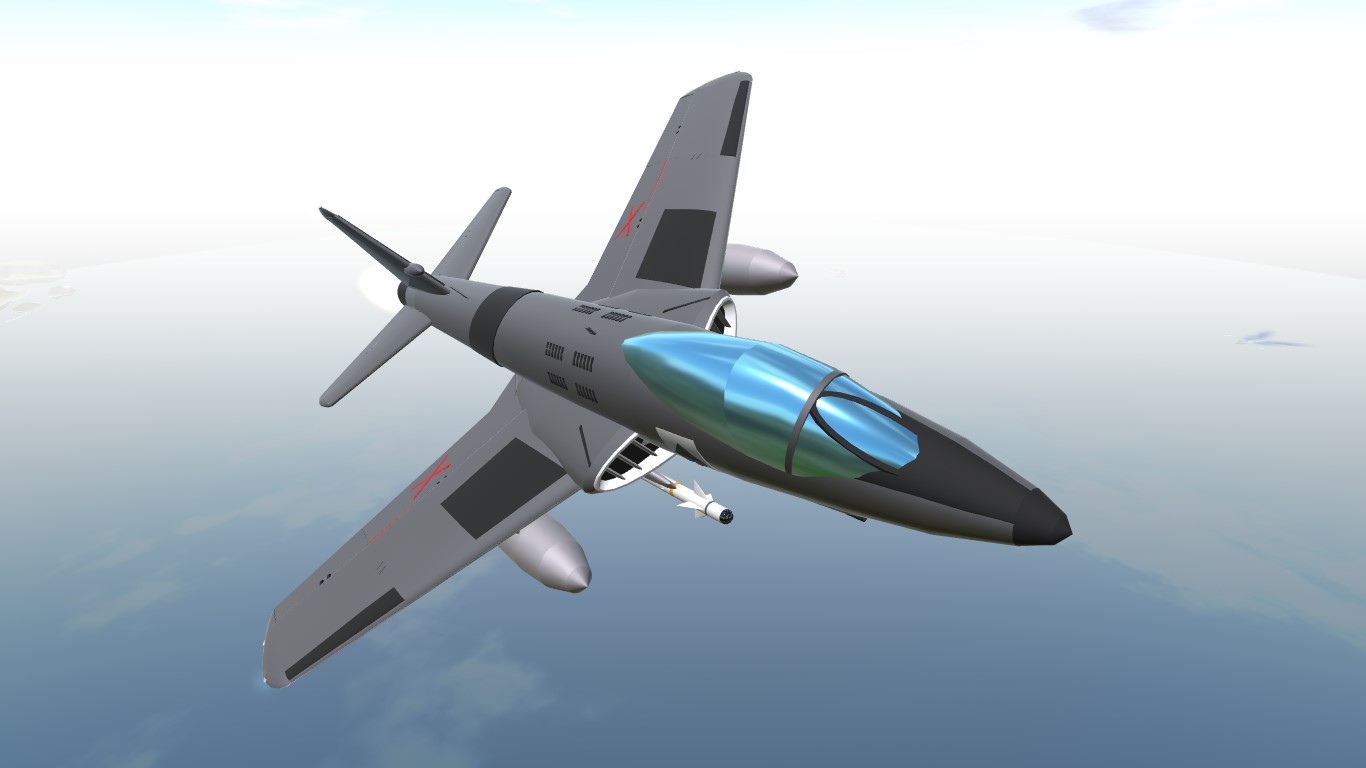
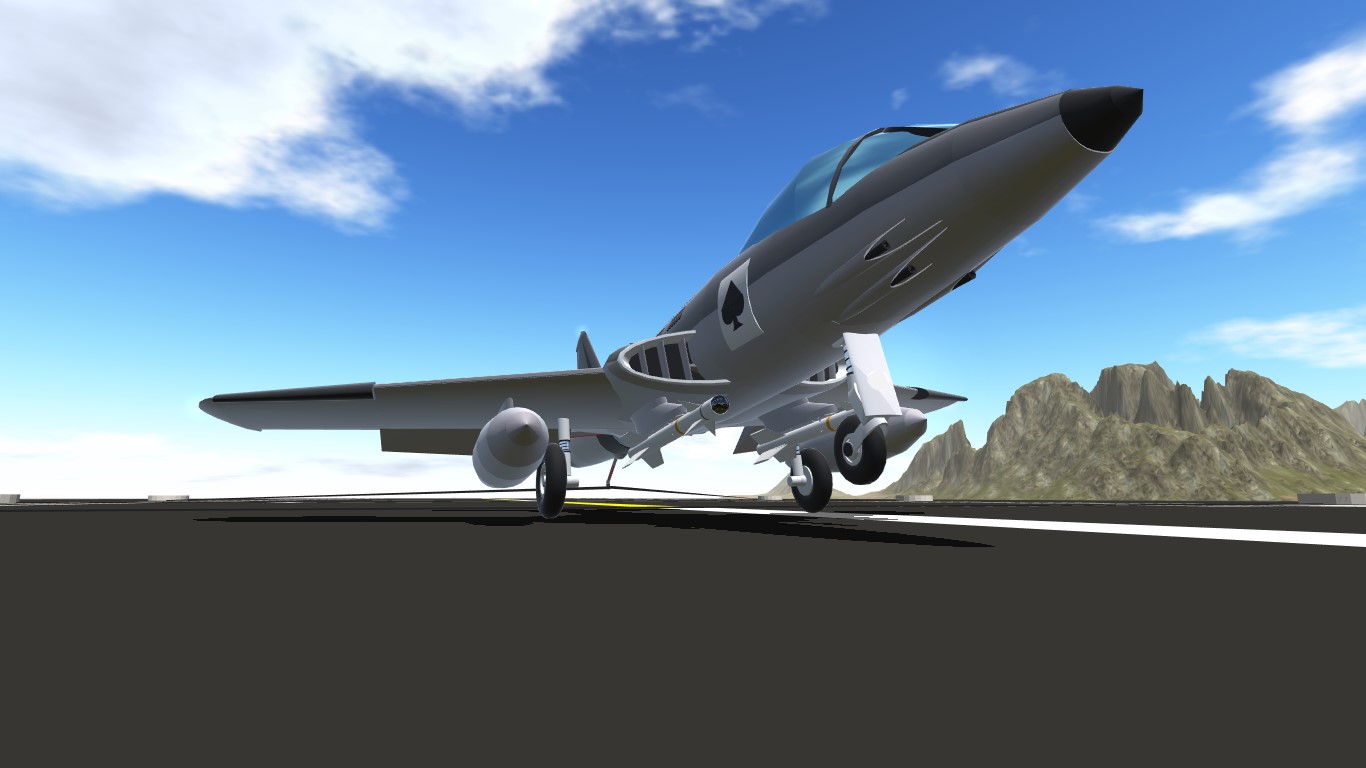
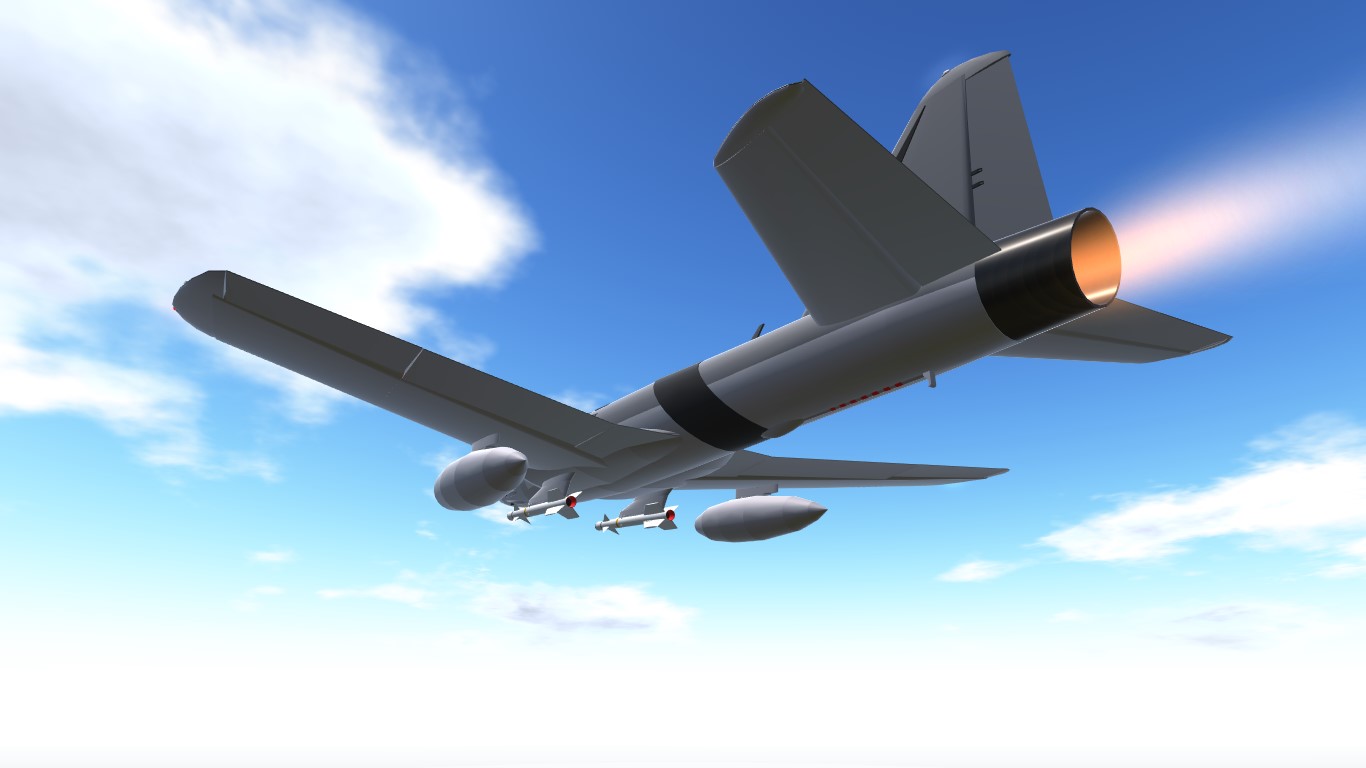

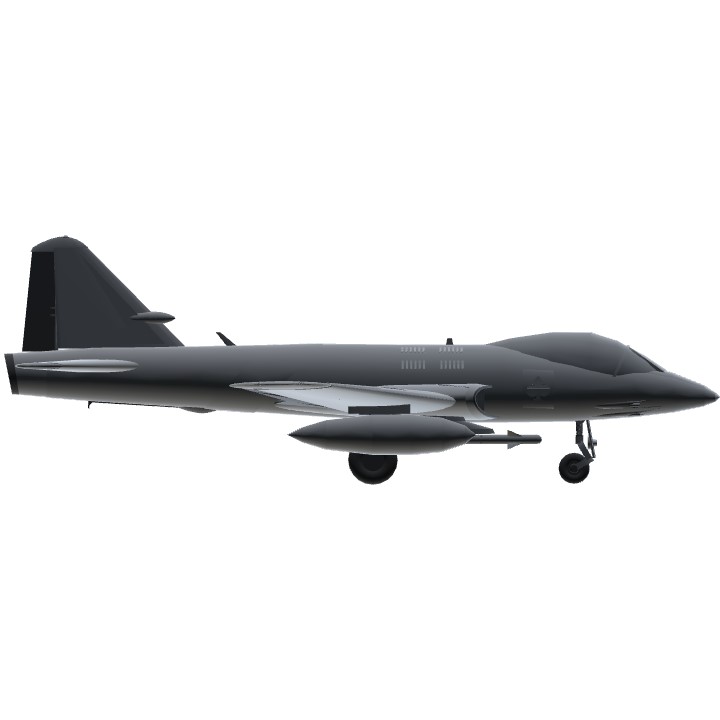
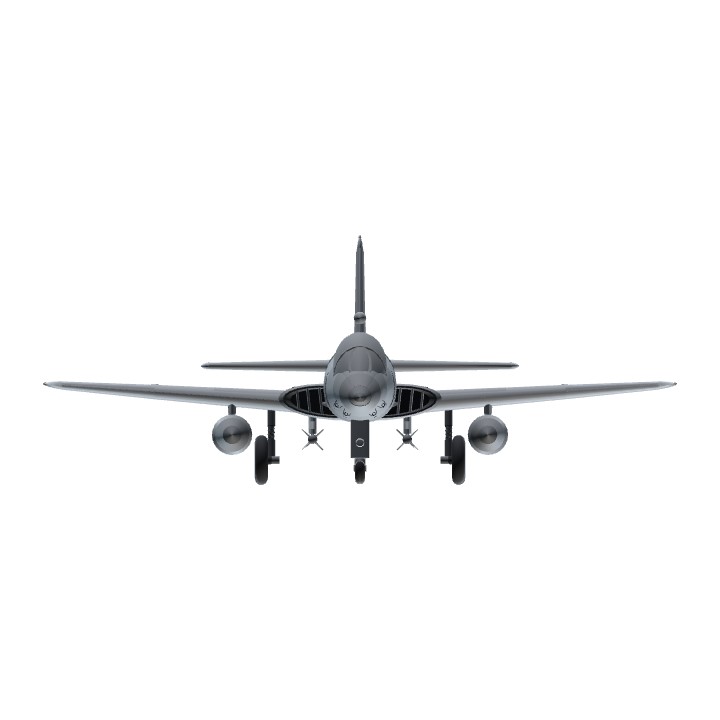
Here is the result for this entry! This one was really fantastic. One of my favourites
Design: 18/20
Functionality: 8/10
Performance: 11/15
Build quality: 14/15
Paint scheme: 4/5
Personal opinion 5/5
Overall: 60/70 (6 upvotes!)
@RareHeroicDancer Ah, that explains it then! Yeah, SP physics does some weird things. This is actually my first gear that works kinda alright, so I was a bit worried.
@FlyingHueman it seems like the problem was with my physics settings. I had it on low but when I turned it up on high the plane landed with no problem.
@RareHeroicDancer custom landing gear has always been a massive problem with all my builds. That is strange though, because I did carrier landings at much higher speeds in this thing, and with its predecessor, which uses the same gear, I could slam it into the runway even at 150-160 no problem.
I really like flying this plane but there is a problem with it. Whenever I land at around 120 the landing gear will explode causing the rest of the plane to blow up.
@FlyingHueman i usually dont like jets so yeah its high praise. maybe even extreme but its still praise
Wow! The quality of this is amaaaazing!! And the description is nearly as good as well! Great work, great plane, looks legit
@teodor99 That's high praise considering the planes I've seen around on this site! Thanks a lot, glad you enjoyed it.
@Mustang51 Thanks man! It's just a mashup of the other one, but I quite liked how it came out so decided to enter it as well lel
this jet is one of the most good looking jets i have ever seen. 10/10
Wow another wonderful build! Thanks for the entry!